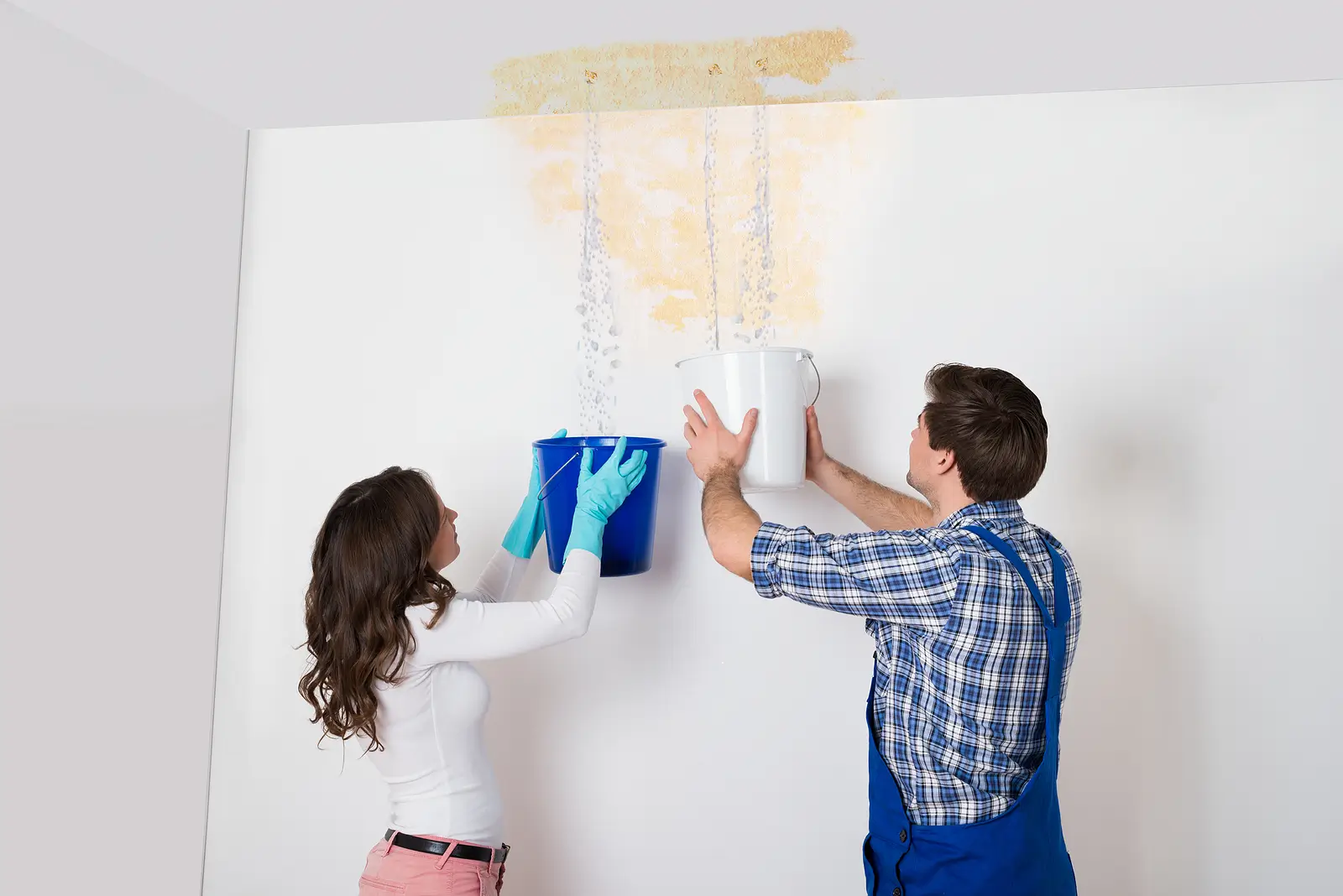Just like rust on a bike, water leaks can cause extreme damage to a home if not addressed quickly. This can happen through burst pipes, broken roofs, or natural disasters. Either way, there are signs you can look for during maintenance checks to immediately fix the issue before it turns into more expensive repairs, or worse, a safety risk to you and your tenants.
Water Damage Checklist:
☐ Water Stains
These are the most obvious signs of water damage, and can appear on the walls and ceilings. They can be brownish or yellowish in color. Track where the leaks could be coming from and have them fixed promptly. Replace the damaged area to prevent mold growth and eventual collapse of the affected material.
☐ Bubbling or Peeling Paint
If a surface is painted over, you might not see any visible moisture right away. However, peeling or bubbling paint can be caused by the excess moisture on the walls or ceilings. With the water being held in specific areas, this can lead to rot and deterioration, especially if the material behind the paint is wood.
☐ Standing Water
You can check the lowest level of your rental property for still water, which is usually accumulated when the water leaks trickle down. This can be dangerous in many ways. Standing water is the perfect breeding ground for many harmful bacteria, parasites, fungi, and mold. It will also weaken the structural integrity by eroding your home's foundations and rotting wooden components.
☐ Visible Mold
Sometimes, mold or mildew growth can be caused by moisture in the rental unit, but if a musty smell remains after mold removal, the issue may be more internal. The restoration process can be more complicated, as it involves tracing the source of the moisture. You must also do this as quickly as you can due to the health risks it poses.
☐ Increased Utility Bills
If you notice an increase in your monthly water bills, it may indicate issues within your plumbing system. There are likely hidden leaks that can lead to widespread water damage. Do not underestimate small leaks. Over time, the accumulation of water will cause gradual damage, including structural issues and health problems in tenants.
☐ Sagging Ceilings
As far as the most common causes of water damage go, sagging ceilings make it easier to identify water damage, as it’s often related to leaky roofs. Missing shingles or holes can cause water from heavy rains to drip down your ceiling. Finding the problem is one thing; water damage restoration is another. You may need to ask your tenant to vacate the rental unit temporarily while you repair water damage.
☐ Spongy Floors
Unfortunately, hidden water damage on your floors is already a sign of extensive water damage. It can be categorized as a severe case since it takes time for water to penetrate the floorboards. Chances are, the subfloors are already affected as well. Should this occur, you need to hire a professional to fix the affected areas as soon as possible to avoid collapse or further deterioration and costly repairs.
Three Categories of Water Damage
Category One: Clean Water
These are waters that are considered relatively clean, depending on their source, such as rainwater, melted snow, dripping faucets, sink overflow, or broken appliance water lines. They usually don't have the musty odors that other categories have. While it still calls for concern, your residents are likely not at any bacterial or fungal risk.
Category Two: Grey Water
Grey water already shows noticeable discoloration caused by the contamination of its source. It can come from washing machine discharge, dishwasher discharge, toilet bowl overflow, and more. Even with small amounts of contaminants, the leaks are already considered dangerous. They can already give off a musty smell, and will only go away once the water damage is fixed.
Catheofy Three: Black Water
This type is the most dangerous of all and causes evident discoloration on the affected materials. It is likely to cause sickness or discomfort since the water comes from sewage, toilet backflows, stream water, flood water, or contaminated water sources that enter your home or business. The contaminants can wreak havoc beyond the wet areas and must be addressed immediately.
How You Can Mitigate Water Damage
- Routine Inspections: Regularly checking your rental property for common signs of water damage can help you prevent costly repairs, avoid musty odors, and reduce water bills.
- Maintain Gutters and Downspouts: Clogged gutters and flimsy downspouts can cause a lot of damage if you don't maintain them regularly. Do so at least twice a year by cleaning off dirt and debris.
- Slope Your Yard: You can landscape your yard in a way that water flows away from your foundation to prevent water damage. As a bonus, plant trees and shrubs to help absorb excess water.
- Test Your Sump Pump: If you have a basement, make sure that your sump pump is working before rainy seasons. Store a battery backup just in case of an outage.
- Learn the Signs of Water Damage: Knowing what to look for and spotting the warning signs can significantly speed up your response time, even before your routine inspections. Between mold growth and water stains, unresolved water leaks into expensive restoration costs.
- Prepare Your Vendor Contacts: You should already have the contacts prepared for professional services you might need, such as mold removal, repairs, or restoration.
Rental Property Water Damage FAQs
Does landlord insurance cover water damage?
- Yes, insurance coverage typically includes burst or leaking pipes, appliance malfunctions, roof leaks, and heavy storms. It's still important to check your specific policy to ensure that these damages are covered.
Is it possible to discover hidden water damage?
- Yes. You can find water damage signs even without seeing its source. There can be discoloration on the walls, ceiling, and floors, or the rental unit can give off musty odors from mold growth. You may even use your water meter by turning off all water-using appliances and fixtures, and checking the leak indicator.
Is water damage restoration expensive?
- That can depend on the extent of the water damage and its source. Burst pipes can cost you a few hundred dollars, while severe structural damage can cost you tens of thousands of dollars.
Get Everything Under Control with Expert Management
You can keep any property damage to a minimum, or even avoid it altogether, with regular maintenance. This is a landlord's responsibility that's just as important, given that it helps you retain your property value, keep tenants safe, and reduce potential turnovers.
If you ever feel overwhelmed or don't know where to start, you can always turn to a property manager who does. Here at CRM Properties, you will have access to reliable vendors and efficient property management services.
Let us help you keep your investment property in good shape. Let's talk!


